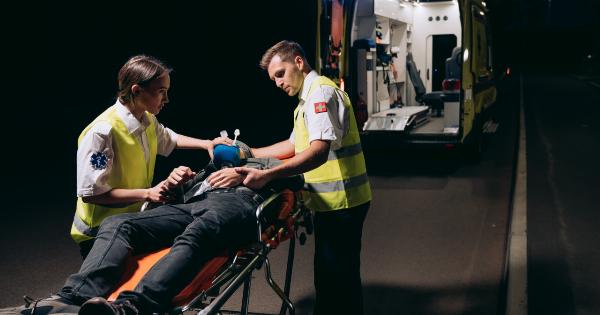Spasms in children can be scary for both the child and parent. These involuntary movements can range from mild to severe and can be caused by various factors. As a parent, it is important to understand the causes of spasms and how to manage them.
What are Spasms?
A spasm is a sudden, involuntary contraction of a muscle or group of muscles. Spasms can occur in any part of the body and can range from mild to severe. Some spasms may be painful, while others may not cause any discomfort.
What Causes Spasms in Children?
The causes of spasms in children are often related to the underlying condition or injury. Some common causes of spasms include:.
- Cerebral Palsy
- Epilepsy
- Muscular Dystrophy
- Tourette Syndrome
- Injury to the Brain or Spinal Cord
- Dehydration
- Electrolyte Imbalances
- Hyperventilation
How to Manage Spasms in Children?
Managing spasms in children involves understanding the underlying condition and treating it accordingly. Depending on the severity of the spasms, there are several strategies that can help minimize their impact.
1. Medication
In some cases, medication may be prescribed to help manage the spasms. Antispasmodic drugs can help reduce the frequency and severity of muscle spasms.
In other cases, medication may be prescribed to manage the underlying condition that is causing the spasms, such as epilepsy or Tourette Syndrome.
2. Stretching and Massage
Stretching and massage can help relax the muscles and reduce spasms. Gentle stretching exercises can be done several times a day, especially before bed. Soft tissue massage can also help increase blood flow to the affected area and reduce muscle tension.
3. Hydration
Dehydration and electrolyte imbalances can cause muscle spasms. Ensure your child drinks plenty of fluids, especially water, throughout the day.
If your child is ill or vomiting, make sure they receive appropriate hydration and electrolyte replacement therapy if necessary.
4. Comfort Measures
When your child experiences a spasm, it is important to provide comfort measures to help reduce pain and discomfort. Applying warm compresses to the affected area can help relax the muscles.
Providing your child with a quiet and calm environment can also help reduce anxiety and further muscle tension.
5. Physical Therapy
Physical therapy can help children with spasms to improve their strength and range of motion. A licensed physical therapist can create a customized plan that is specific to your child’s needs and help them achieve their optimal physical function.
6. Supportive Devices
Supportive devices such as braces or splints can help reduce the impact of spasms on the affected limb. These devices can help support the muscles and prevent further damage.
7. Surgical Treatments
In rare cases, surgical treatments may be necessary to treat the underlying condition or alleviate spasms. Surgery may be required to remove a tumor or lesion, or to correct a spinal cord or brain injury.
Conclusion
Spasms in children can be a sign of an underlying condition or injury. As a parent, it is important to understand the causes of spasms and to seek medical attention if necessary.
Managing spasms involves a combination of treatments and strategies that are specific to your child’s needs. With proper management, children with spasms can lead healthy and productive lives.





























